A scientific article on the Red List of Latvian lichens, that was developed using IUCN criteria, has just been published - "Toward the first Red List of Latvian lichens according to the IUCN criteria."
The lead author of the article is Polina Degtjarenko, an expert from the LIFE FOR SPECIES project at Daugavpils University. Co-authors include Latvian lichenologists Renāte Kaupuža and Rolands Moisejevs from Daugavpils University, as well as lichenologists Jurga Motiejūnaitė from Lithuania and Tiina Randlane from Estonia.
The article has been published in the internationally cited journal "Plant Biosystems - An International Journal Dealing with all Aspects of Plant Biology" and is available here: https://www.tandfonline.com/doi/full/10.1080/11263504.2024.2399056
The article is also available in PDF format here: https://ej.uz/lichens
The article is dedicated to the memory of the outstanding Latvian lichenologist Dr. Alfons Piterāns. A short tribute is included on the first page of the article.
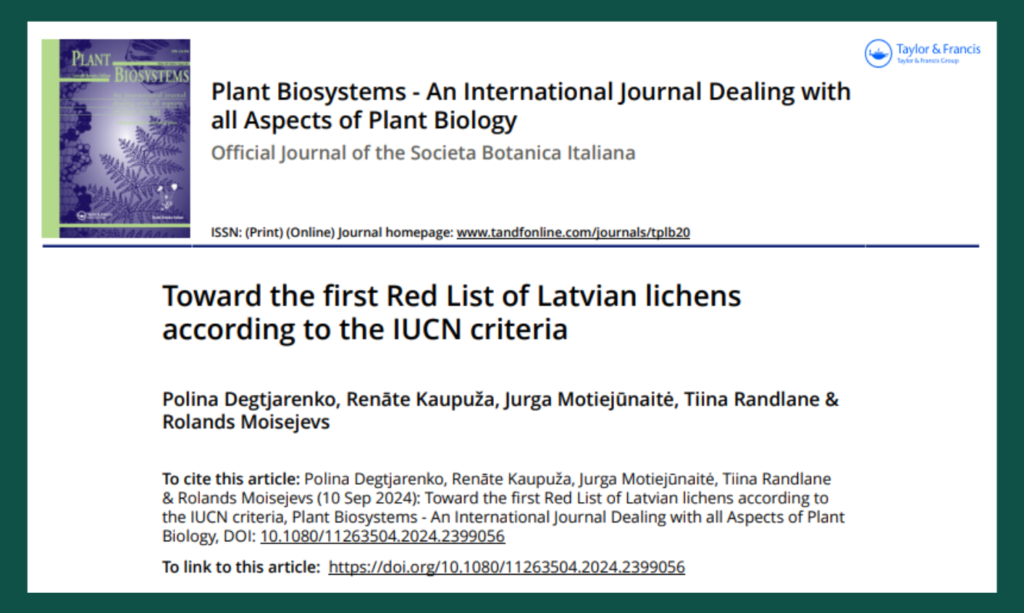
Liene Auniņa, the coordinating species expert for vascular plant species from the project LIFE FOR SPECIES, from the Institute of Biology (University of Latvia), participated in the XX International Botanical Congress (IBC) in Madrid, Spain, 21-27 July 2024.
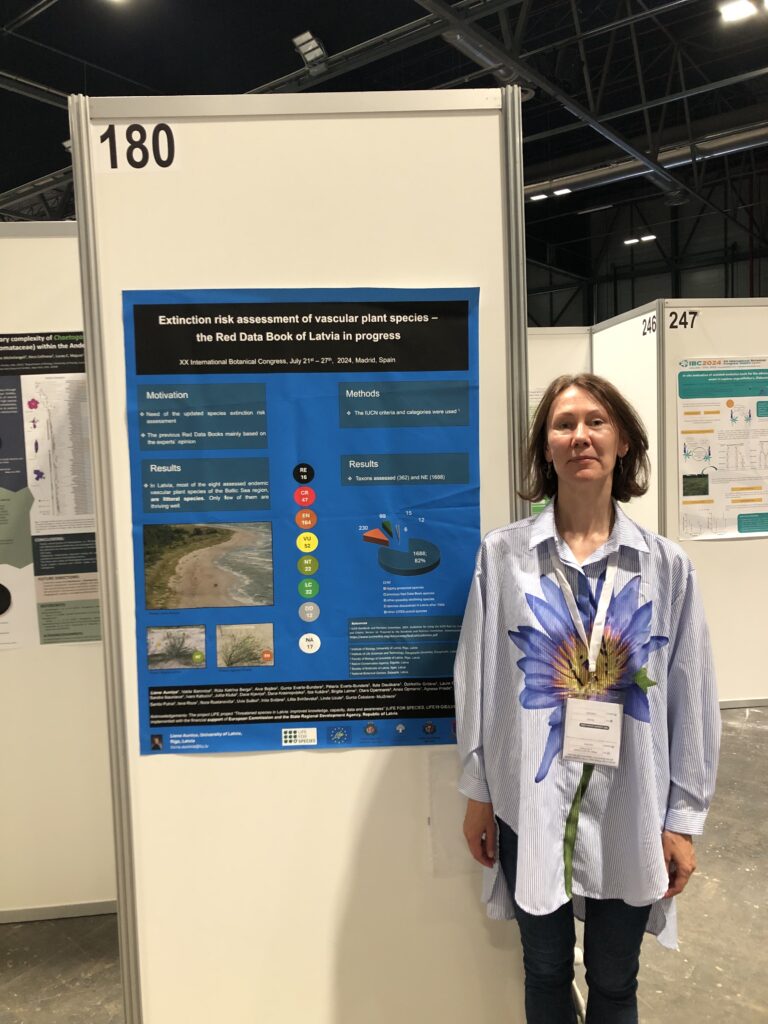
The IBC is one of the most significant meetings for botanists, which takes place every six years under the supervision of the International Association for Botanical and Mycological Societies (IABMS). The Congress included the opening lecture, 6 plenary lectures, 18 keynote lectures, 4 public lectures, concurrent 267 symposia, as well as short courses and workshops. There were 1608 talks and c. 1400 posters in the congress. The number of registered botanists was 2998 from all continents. There were 40 symposium topics, covering Systematics, Conservation Biology, Global Change Biology, Biogeography/Phytogeography, Ecology and Plant Communities etc. Symposia devoted to the synergy of art and botany, the use of plants in traditional medicine, as well as to lifelong botanical education and citizen science also took place in the congress. There were many exhibitors presenting different publishers, Botanical Societies as well as the LIFE project `LIFE4POLLINATORS (LIFE18 GIE/IT/000755) - Involving people to protect wild bees and other pollinators in the Mediterranean` in the congress venue. On the last day of the congress, the Madrid Declaration was approved proposing ten strategic actions for plant scientists, botanical institutions, governments, the corporate sector, and civil society, aiming to address plant life degradation caused by human activities (https://globalplantcouncil.org/the-madrid-declaration/).
Liene Auniņa presented the poster Extinction risk assessment of vascular plant species in Latvia: first results, co-authored by other assessors for vascular plant species in Latvia, under the symposia S.153 Systematics, floristics, and conservation, facilitating data integration to promote sound science. The aim of the presentation was: to introduce the international public (botanists from all over the world) with the results of the evaluation of Latvian plant species according to the IUCN criteria to, and to exchange experience in the research and conservation of rare and threatened species.
Liene Aunina participated in various symposia e.g. Systematics, floristics, and Conservation, facilitating data integration to promote sound science, Inventorying the plant diversity of the Euro-Mediterranean, Integrating taxonomical progress into dynamic web check-lists and electronic floras, Orchid phylogenomics: diversification, trait evolution, and biogeography, The key role of refugia in facing the global biodiversity crisis, as well as in the workshop `World Flora Online: how to get involved`.
Link to the congress website: https://ibcmadrid2024.com/
Conclusions and feedback:
At the end of August, more and more mushroom hunters can be found in the wast Latvian forests, so we encourage everyone out searching for autumn treasures to be observant. You might come across this month's protected species – Trichaster melanocephalus.
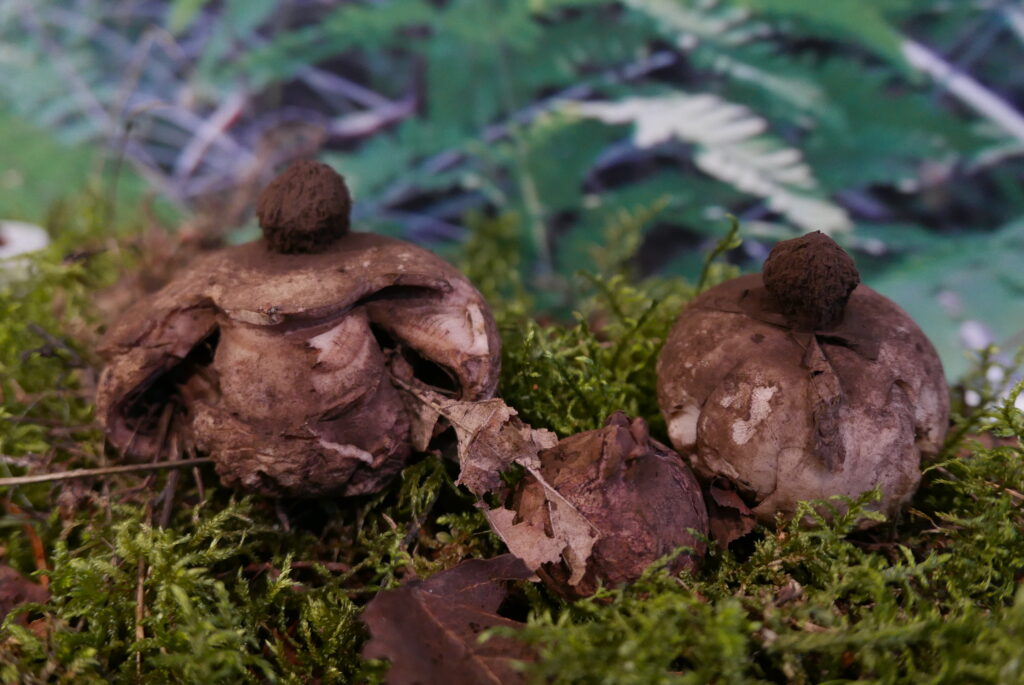
Trichaster melanocephalus (syn. Geastrum melanocephalum), like other earthstars, resembles a puffball surrounded by a membrane that splits into lobes, giving the fungus its star-like appearance.
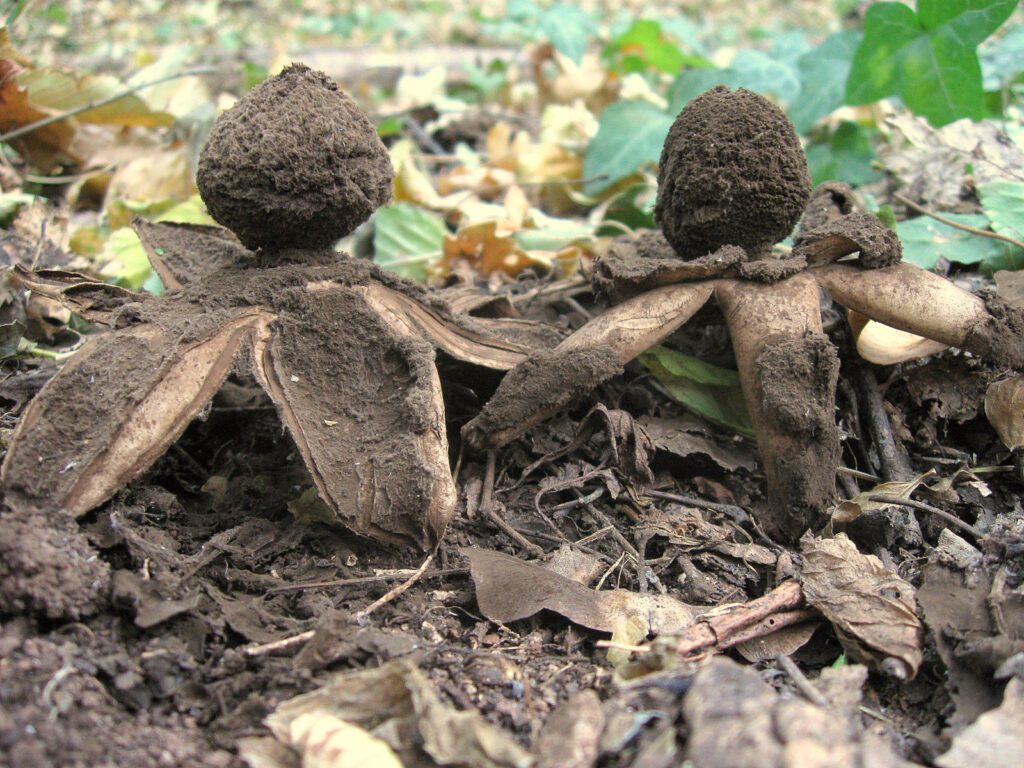
This is the largest earthstar species found in Latvia, with a diameter that can reach up to 7-15 cm. After the inner and outer membranes split, the fungus develops 4-6 lobes, and occasionally even 8. It is most commonly found in deciduous and mixed forests with rich soil.
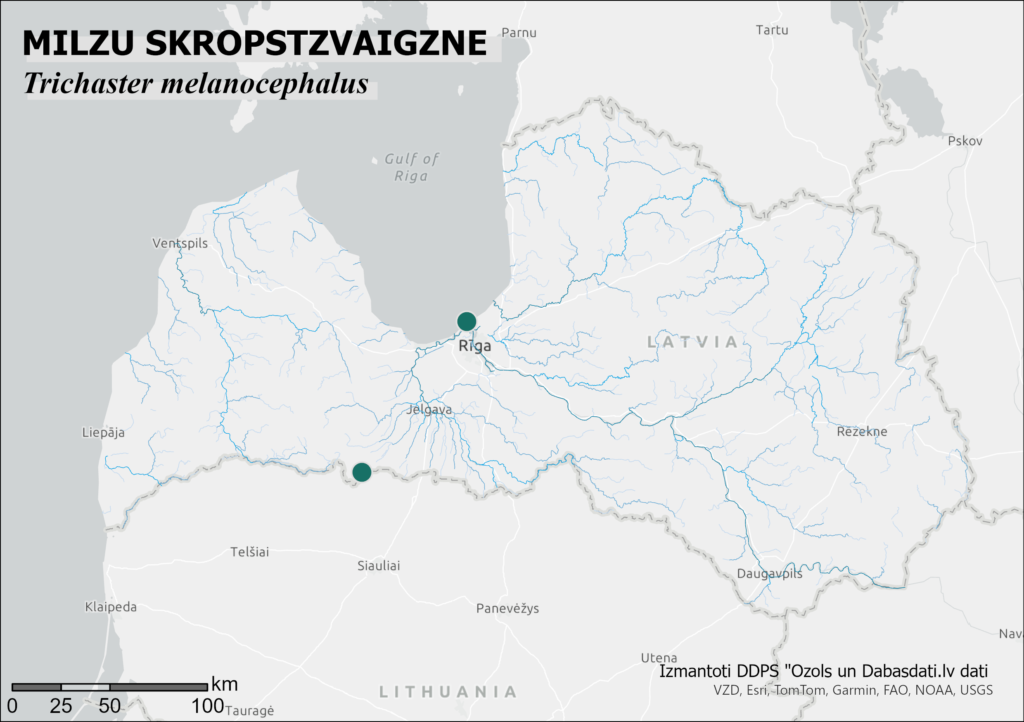
Trichaster melanocephalus is threatened by ecosystem changes and degradation caused by logging and wood extraction.
Research conducted during the LIFE FOR SPECIES project has classified the species as critically endangered, meaning there is a very high risk of extinction in the wild.
In July, we would like to highlight a truly colorful species – the fire-bellied toad (Bombina bombina). In Latvia, this species is primarily threatened by the overgrowth of ponds, which reduces the number of suitable breeding sites and habitats.


The fire-bellied toad is small in size, typically reaching only 5-6 cm in length. Its back can vary in shades of brown or olive-gray, often adorned with darker spots. The belly is bluish-black with bright red or orange patches, which is where the species gets its common Latvian name. The pupils of its eyes are heart-shaped. If you encounter this rare species in the wild, be cautious, as its skin secretes a toxic substance.
Fire-bellied toads begin breeding at two years of age, with the majority of the breeding population consisting of individuals 4-5 years old. The maximum lifespan of the species in the wild is just 6 years for males and 7 years for females, although in captivity, the recorded maximum lifespan is around 20 years.
Research conducted during the LIFE FOR SPECIES project has classified the species as vulnerable in Latvia (VU).

The breeding season for fire-bellied toads is extended and lasts from May to June, although male vocalizations can be heard until autumn. The entire active period is spent in bodies of water, mainly ponds, and gravel or peat quarries. For spawning, they choose water bodies with stable water levels, avoiding ponds with sandy shores and preferring those with clayey soils.
During the breeding season, the male fire-bellied toad can be distinguished from the female by the dark brown nuptial pads on the inner forelimbs. The total number of eggs is small (~300), laid in clusters on underwater vegetation. The tadpoles hatch after 4-10 days and are characterized by a high tail fin with a reticulated structure. Fire-bellied toad tadpoles tend to stay in overgrown areas of the water layer, with metamorphosis occurring in the second half of August. The length of young toads after metamorphosis is around 1-1.5 cm. They feed on small aquatic creatures (mosquito larvae, etc.) and invertebrates from the shore (spiders, flies, insect larvae). The species most often hibernates on land.
This weekend, many of us will be heading out in search of wildflowers for Midsummer celebrations. Before you go, we encourage you to learn about this month's protected species - the Siberian Iris (Iris sibirica L.), so it doesn't accidentally end up in a Midsummer wreath or festival decorations.
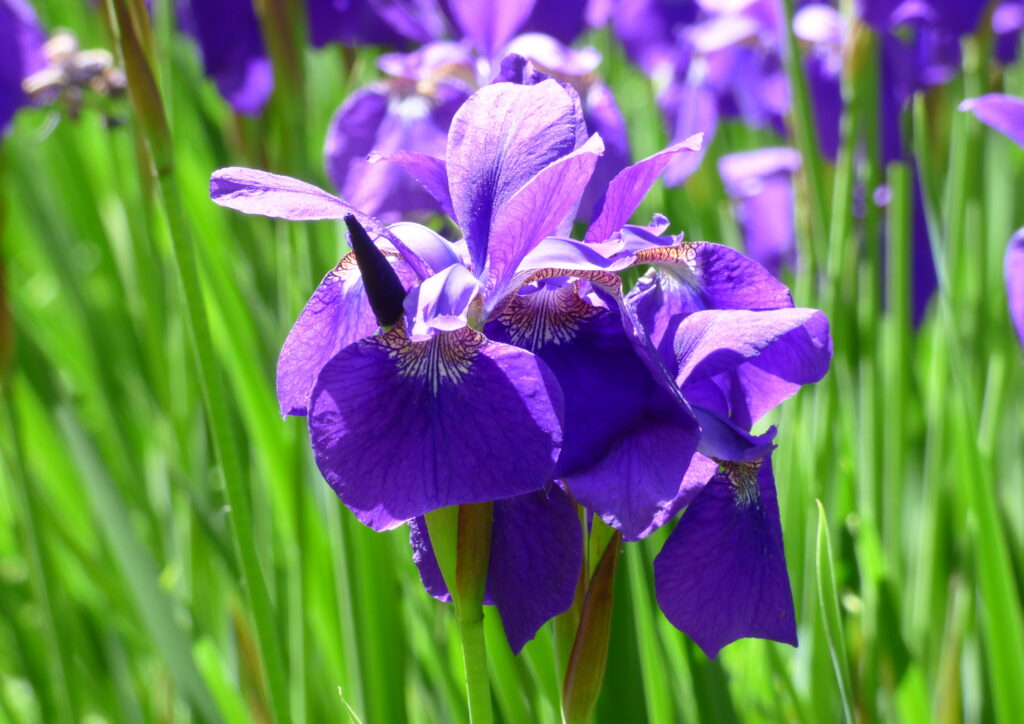
The plant usually stands 70-100 cm tall, with linear leaves up to 40 cm long, sword-shaped, shorter than the stem, arranged in two rows in a rosette, and slightly grooved at the base. The flowers are large and striking, usually 2-3 in a fan-shaped inflorescence.
The outer tepals are bent downwards, dark blue with lighter blue stripes inside. The inner tepals are erect, closed, and dark blue. The style is short, with three petal-like lobes. The Siberian Iris blooms in May and June, so you might come across it while exploring nature at this time!
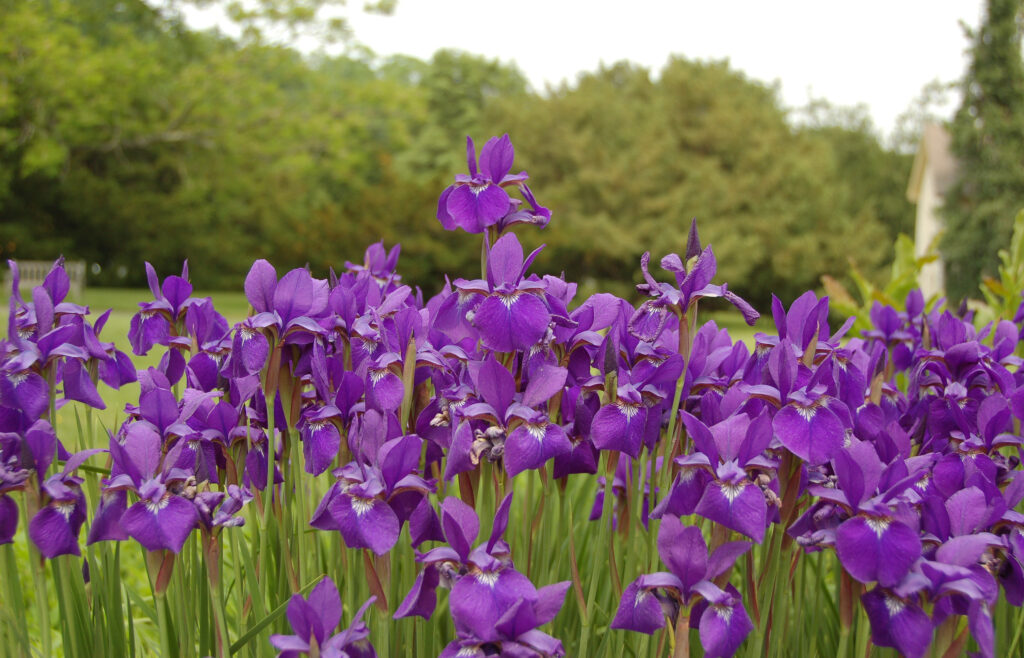
The species is widespread in Central and Eastern Europe, mainly in temperate and moderately warm zones. In Latvia, the species is relatively rare and unevenly distributed, primarily found in the Coastal Lowland of Western Latvia, Eastern Latvia, and the Daugava River valley and its tributaries in Central Latvia. In Latvia, the species grows near the northern edge of its range.
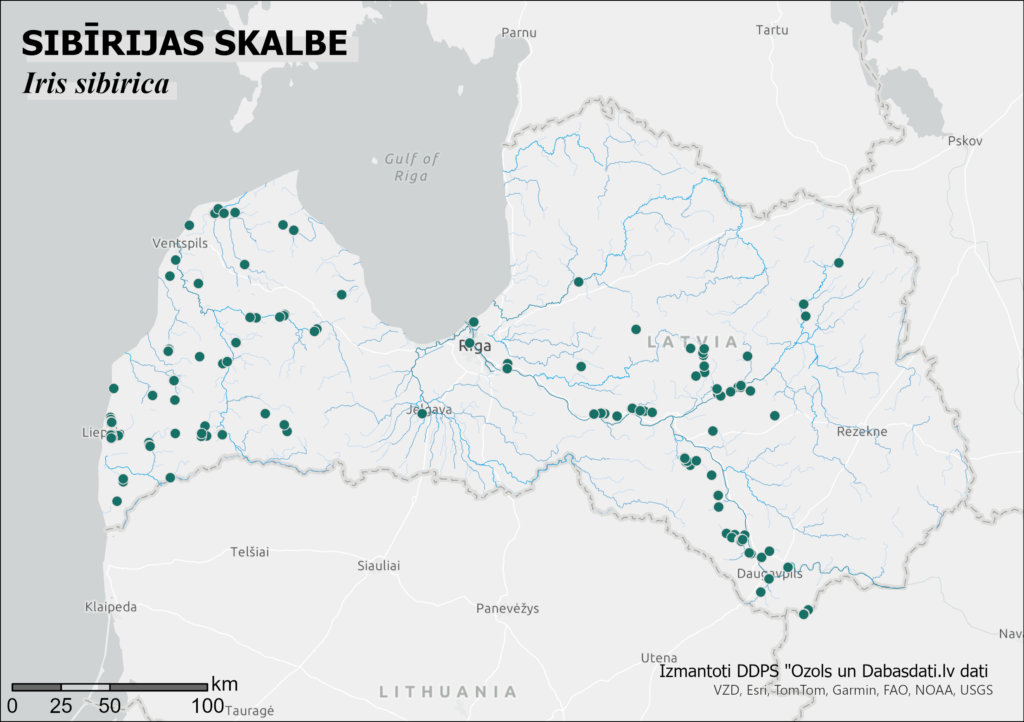
The Siberian Iris is found in wet and marshy floodplain meadows and outside floodplains, as well as in shrublands. It is mainly threatened by the plowing and drainage of natural grasslands, overgrazing, and the encroachment of natural grasslands. The destruction and fragmentation of natural wet meadows contribute to the decline of its populations and genetic diversity. Given its ornamental value, its habitats are also damaged due to the harvesting of plants and flowers.
From May 22-24, 2024, Andris Čeirāns, an amphibian and reptile expert from the LIFE for Species project, attended the LIFE project platform conference titled "Amphibian and Reptile Conservation (ARC) Challenges and Opportunities in Europe." The event, organized by the Steps for LIFE project, took place in Santander, Spain. The conference attracted over 50 participants from nearly 30 LIFE and other EU program projects, as well as representatives from various stakeholders such as the European Commission, IUCN, WWF, ARC TRUST UK, and others.
The event aimed to facilitate the exchange of experiences regarding methods and monitoring techniques used in amphibian and reptile conservation. A. Čeirāns participated in the legislative and policy framework working group session as a keynote speaker, delivering an oral presentation on the protection of threatened herpetofauna in Latvia. His presentation emphasized IUCN-based taxon evaluations and criteria for a provisional list of protected species ("The Protection of Threatened Herpetofauna in Latvia, with an emphasis IUCN-based taxa evaluations and proposals for the protected species list criteria"). Additionally, the conference provided opportunities to engage in discussions within other working groups focused on the impact of climate change on protected areas, control of invasive amphibian and reptile species, and mitigation of anthropogenic impacts.

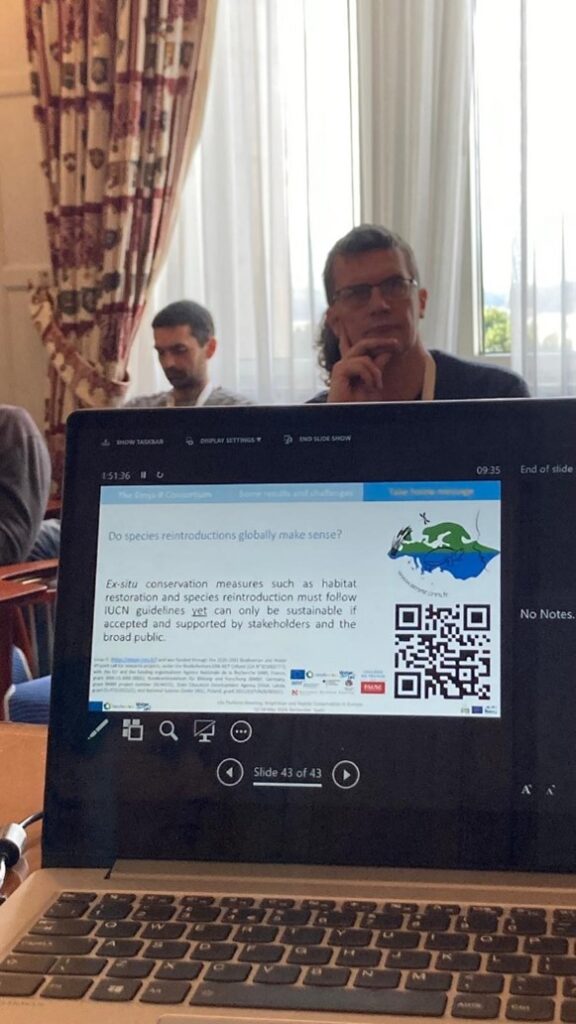
Key Conclusions and Insights:
On May 28th and 29th, a seminar on the identification and protection of mosses was held in Ķemeri National Park, organized by the Nature Conservation Agency and the Institute of Biology at the University of Latvia as part of the LIFE FOR SPECIES project.
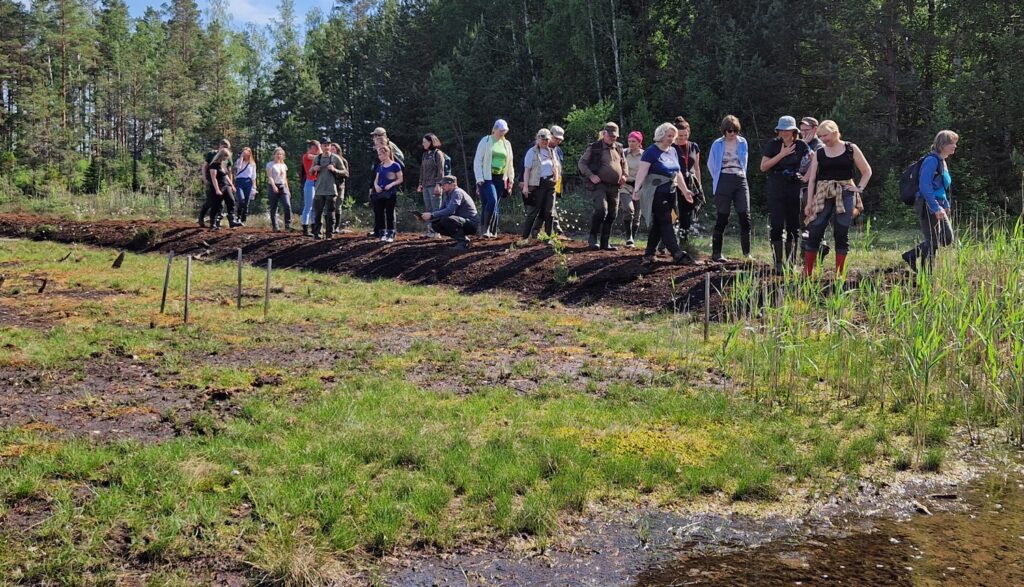
The seminar began with a lecture by Andis Kalvāns, a leading researcher at the Geological Processes Research and Modeling Center of the University of Latvia, on the practical application of hydrogeological data in the work of nature experts. This helps to better assess the impact of planned activities on groundwater and surface water, and consequently on moss habitats. In the following presentation, environmental consultant Anete Pošiva-Bunkovska introduced guidelines for experts, commissioned by the Nature Conservation Agency, on assessing the impact of forest roads and drainage systems on moss habitats.
Līga Strazdiņa, a moss expert from the Institute of Biology at the University of Latvia and the LIFE FOR SPECIES project, discussed planning conservation measures for mosses with various ecological requirements. Agnese Priede, a long-time researcher at Ķemeri National Park and expert in the LIFE-IP LatViaNature project, initiated a discussion on the planning and best practices of restoring the hydrological regime of bog habitats, with examples from the Ķemeri Mires, where habitat restoration work has been carried out under the LIFE projects "Restore" and "Protection of Wetlands in Ķemeri National Park."
On the second day of the seminar, Ilze Ķuze, a senior expert at the Nature Conservation Agency, presented best practices for establishing micro-reserves to protect moss habitats. Moss expert Uvis Suško talked about the diversity and habitats of mosses in Ķemeri National Park. Ķemeri National Park is one of the richest areas in Latvia for rare and protected moss species, due to its great variety of natural conditions. The park has recorded 45 protected moss species and 58 species listed in the Latvian Red Book.
To enhance experts' skills in recognizing protected moss species, Uvis Suško and Līga Strazdiņa conducted practical sessions in natural forest habitats and indoor laboratories on both days of the seminar. During these sessions, various protected and endangered species were examined, such as the EU-protected species Dicranum viride, and specially protected species Frullania tamarisci, Riccardia multifida, Antitrichia curtipendula, and others.
As noted by the LIFE FOR SPECIES project coordinator Jēkabs Dzenis: “Many endangered and protected species depend on the moisture conditions in their habitats. Human activities such as the creation and renovation of drainage systems, road construction, and mineral extraction can significantly alter moisture conditions over large areas, thereby affecting the habitats of endangered moss species. Thus, the seminar provided experts with the opportunity to enhance their knowledge on identifying moss species, assessing impacts on them, and planning conservation measures to ensure the preservation of moss habitats.”
As May comes to a close, we enjoy sunny, warm weather that invites everyone to explore and appreciate the diversity of Latvia's nature. Keen nature observers might spot this month's protected species - the Duke of Burgundy, as these butterflies fly from late May until mid-June.
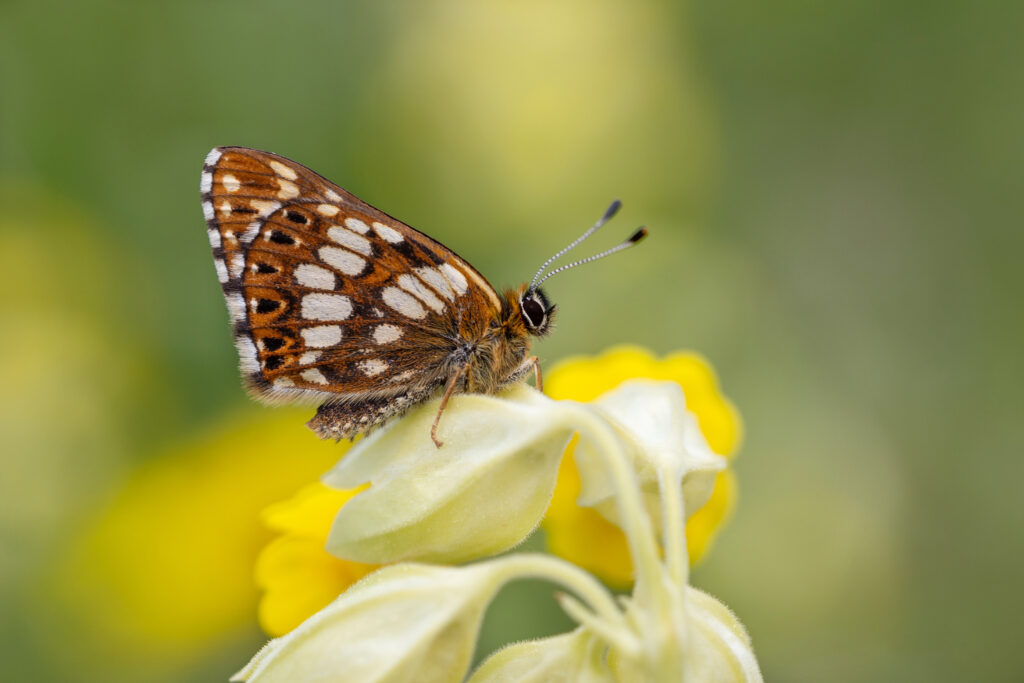
The wingspan of the Duke of Burgundy (Hamearis lucina) is 29-31 mm for males and slightly larger for females at 31-34 mm. The upper side of the wings is a rich rusty brown with a beautiful dark pattern, while the underside is brown with red spots, and the hindwings may have white spots. The wing patterns of males and females differ only slightly.
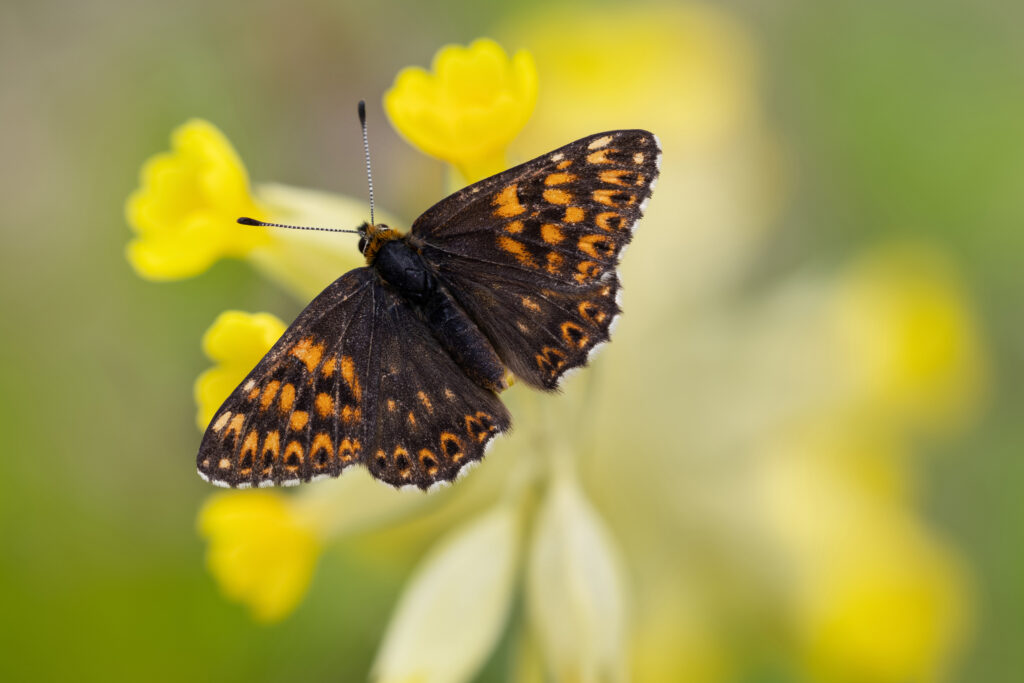
Duke of Burgundy butterflies are active during the day and feed on flower nectar. The caterpillars' host plants are primarily primula species, particularly Primula veris, from which the species likely gets its Latvian name. There is one generation per year (in the south, there may be two generations). Females lay 1-2 eggs on the underside of the host plant's leaves. The caterpillars hatch after 2 weeks and develop from June to August, overwintering as pupae.
The Duke of Burgundy is widely distributed in Western Europe, from the Iberian Peninsula (Spain) and the United Kingdom to the Balkans and the Urals. The species has been found in the Scandinavian Peninsula (southern Sweden), as well as in Estonia and Lithuania. In Latvia, most of the species' current habitats are concentrated in the northwestern part of the country, from Kandava to Slītere.

The Duke of Burgundy inhabits open habitats such as forest edges, woodland clearings, and roadsides, preferring habitats with varied terrain and calcareous soil.
This species is protected in Latvia. The main population is found in specially protected natural areas - Čužu Mire and Slītere National Park. The species is threatened by ecosystem changes and degradation.
In the project, the Duke of Burgundy has been assessed as a highly endangered species with a very high risk of extinction in the wild (EN).
If you ever spot a Duke of Burgundy in the wild, report your observation to the Nature Conservation Agency or the Dabasdati.lv portal. We would also be happy to receive reports and photos of sightings on our Facebook page.
Date: September 18-20, 2024
Location: Riga, Latvia (EU)
Safeguarding biodiversity remains a topical challenge of our time, thus we would like to announce the upcoming international conference: "Safeguarding Biodiversity: Red Lists and Beyond." This conference will convene from September 18th to 20th, 2024, in the city of Riga, Latvia, and it is organized by the Institute of Biology at the University of Latvia in collaboration with the Nature Conservation Agency.
Find out more in our second announcement file or the conference website!
Participants are invited to submit abstracts on research and discoveries relevant to the conference topics and workshop. The abstracts can be submitted by filling out this application form.
We kindly encourage all potential attendees to apply in time, as the number of participants in person (face-to-face) will be limited. Participants will be approved in the order of submission of their abstracts.
For inquiries and updates, please contact us at lifeforspecies.conference@gmail.com
As we enjoy the spring sunshine on the coast, so do seal pups. Although grey seal pups are the most commonly seen on Latvian beaches, this time we are highlighting a rarer species – the ringed seal (Pusa hispida).
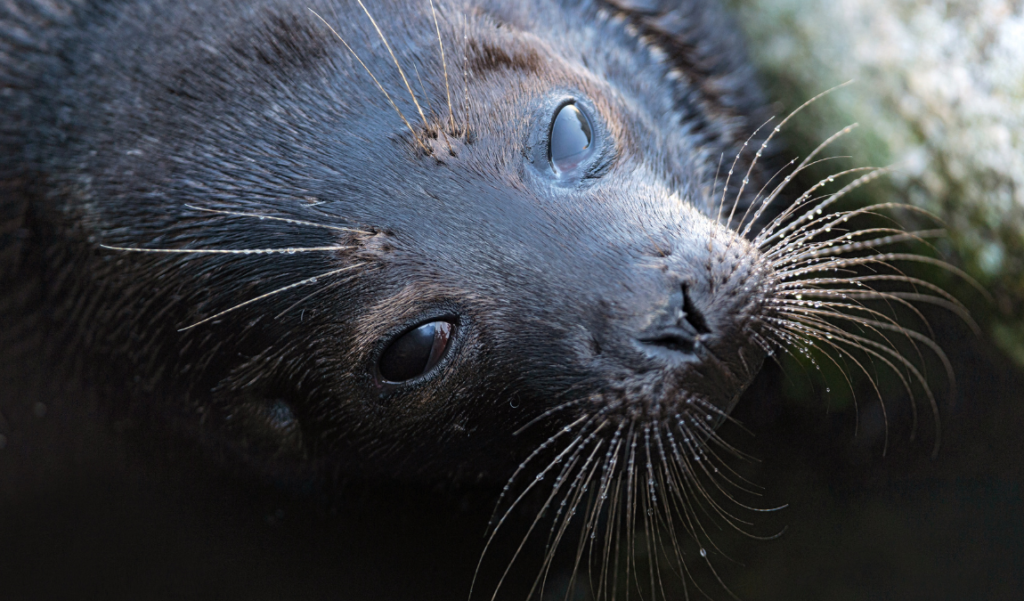
The ringed seal, measuring 130-175 cm in length and weighing only 50-60 kg, is the smallest seal in the world. This species typically lives for 25-30 years, but some individuals have been recorded to surpass 40 years. The seal’s rough, greyish fur (lighter on the belly) features irregularly shaped (mostly oval) spots surrounded by light rings, with a generally unspotted mid-back. It is distinguished from other seals by its small size, blunt snout, “cat-like” facial profile, and unique body coloring. Viewed from the front, its nostrils form a V-shape.
The ringed seal mainly feeds on small fish, it also eats benthic fish and crustaceans. Seals spend most of their lives in the water, feeding. They give birth and rear their pups on ice, where they also rest.
In the Baltic Sea, ringed seals use rocks and cliffs in coastal waters for resting. During the ice-free period, they live pelagically and individually, occasionally resting on stones. They rarely come ashore.
Ringed seals are polygamous: during the mating season in April and May, each male has a territory of several square kilometers, which it defends from other males and overlaps with the territories of several females. Females reach sexual maturity at 3-6 years old and usually give birth to one pup each year. Pups are born in February or early March on ice. The nursing period lasts 6-8 weeks, with the mother being the sole caretaker. Mating occurs while females are still nursing. The gestation period lasts 10.5-11 months.
In the early 20th century, the ringed seal was the most common seal species in the Baltic Sea, but excessive hunting caused a sharp population decline. Today, the greatest threats are global warming, which reduces sea ice, pollution from plastics, organochlorine compounds, and heavy metals, fishing activities, and other human impacts on the sea. In Latvia, the species is classified as critically endangered (EN).
The ringed seal is a protected species in Latvia and the European Union. In 2021, a protection plan for seal species in Latvian waters was developed, with one goal being to resolve conflicts between seals and fishermen. It is crucial not to disturb seals when they are near the shore.
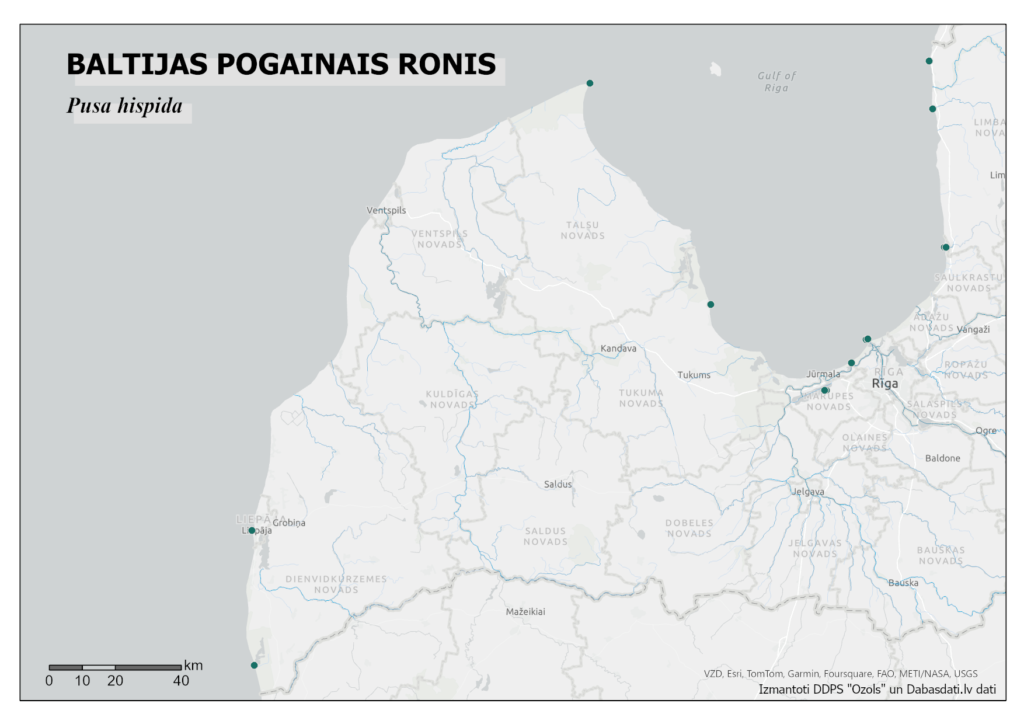
The ringed seal is primarily found in the Arctic. The southern boundary of its range in the Baltic Sea is the Gulf of Riga. In Latvian waters, it feeds, while its resting places are in Moonsund, Estonia. It mainly inhabits the open part of the Gulf of Riga, less frequently coastal waters, the lower reaches of large rivers, and coastal lakes connected to the sea.
Isolated post-glacial relict populations of the ringed seal have remained in the Baltic Sea, Ladoga, and Saimaa lakes, forming distinct subspecies (in the Baltic Sea – Pusa hispida botnica).
If you ever spot a ringed seal in the wild, report your observation to the Nature Conservation Agency or the Dabasdati.lv portal. We would also be happy to receive reports and photos of sightings on our Facebook page.